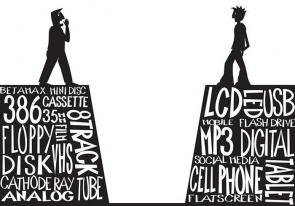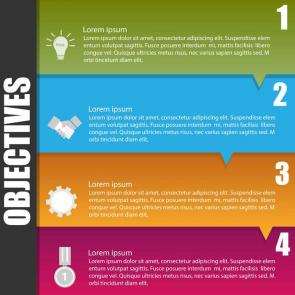A Project Executive Summary Gone Wrong Can Hurt Your Business
Employers, entrepreneurs, board members, most people in the top rungs of managing an organization have a premium on time. Consequently it becomes second nature of top management to go after the substance and ignore what they perceive as inconsequential in most situations.
Differentiating Constructive Feedback from Positive Feedback as a Tool for Employee Motivation
In regular office workspaces, employers and managers use a combination of constructive and positive feedback as a tool for enhancing employee motivation – because this is the combination that works best. However, a regular use of such combinations also dulls perceptions as to the difference between constructive and positive feedback, and which has priority in a given situation.
Why Your Management Hates the HR, and What You Can Do about It
Everything that happens in an organization, whether the outcome of a single or multiple processes, shares a fundamental model made up of inputs, throughputs and outputs.
Capping the Generation Gaps in Your Workplace
I’ll admit something at the very beginning of this article, and request you to keep in mind that generalizations are not absolutes and do not work for each individual. However, for the sake of understanding things quickly, we do need to make generalizations, and more so, when a concept needs to be delivered within the short span of an article.
Enhancing Productivity in a Post-Recession Scenario
With the recession and changes and optimization and cost cutting, the question of productivity and maintaining productivity has become a confusing one – something less defined than it used to be at the time of conveyor belts and when there were no computers or virtual workplaces.
Using an Extended Marketing Mix to Promote Employer Value Propositions
An essential strategy for employers facing a talent crunch, whether as a start-up or as a large venture, is to project the organization as an employer of choice. And this is done through an extended marketing mix though HR departments usually adopt quite a different approach to solving the problem.
4 Simple Strategies for Retaining Your Best Employees
After having done your best and having gone through the grueling experience of screening and sifting through candidates and interviews to find the best matches for your company, you might feel a bit relieved. You are perfectly justified to feel relieved to have hired the best. However, there is no room for complacency, because the moment you hire the best, and from the moment they walk into your company, you need to start thinking about how to retain them.
The ABCs of Behavior Modification Management
The multitude of problems that plague managers suggests that the traditional theories and techniques of management have not been effective. Unlike other theories of management, behavior modification principles and procedures were first developed in systematic and carefully controlled laboratory research.
Classical Conditioning in Behavior Management
Although most managers will not directly employ the principles of classical conditioning, it is important for them to understand the process. First, it can help explain why punitive or disciplinary actions should be avoided or used with caution. Second, managers may find an understanding of classical conditioning useful in modifying their own behavior.
Some Case Studies on Adding a Reinforcer as an Incentive for Performance
Behavioral change experiments to reduce tardiness and absenteeism
Annual bonuses ranging from $24 to $40 proved ineffective in increasing punctuality and attendance in Ideal Standard S. A., a plant in Mexico City. Likewise, disciplinary interviews and one-day suspensions without pay failed to reduce tardiness. Jaime Hermann and his associates tested an incentive program over a period of 77 weeks with six chronically tardy semiskilled male laborers. The incentive system was simple: Each day that the worker punched in on time or earlier, he was given a slip of paper stating that he had earned approximately two pesos. At the end of each week, the men went to the Supervisor of Industrial Relations and exchanged their slips for cash. Statistical analysis revealed a significant decrease in tardiness when the incentive program was in effect.
Behavioral Rehearsal and Telecoaching
Behavioral rehearsal is a procedure in which trainees enact or practice the behavior being learned. A program con ducted by Kenneth Wexley and Wayne Nemeroff with 27 first-level managers in an urban medical center illustrates how behavioral rehearsal can be used in training supervisory skills.
Solving the Biggest Problem in Developing a Training Program
Too many sales personnel at Emery Air Freight were assuming that promises-such as, "Sure, we'll call you next time we have an urgent shipment"-were sales. A look at the actual sales statistics indicated a need for change. Ed Feeney knew the dangers of rushing into a training program before finding out exactly what behaviors needed changing: He had to know what was happening during the sales calls.
Behavior Change Programs and Their Evaluation
Evaluating your behavior change program is useful in many ways -- most obviously in providing information about the effectiveness of your program. It is vital in determining whether or not to continue the program.
Practical Observations on Using Goal-Setting as an Antecedent for Performance
In this strategy, an assigned objective or goal acts as an antecedent which elicits improved performance. The new higher level of performance is then reinforced. Gary Latham and Sydney Kinne demonstrated the effectiveness of goal-setting in a program conducted with 20 pulpwood-logging operators. Half of the producers were trained in goal-setting and half were not. Each week the trainer and producer determined minimum production goals. Using the goal-setting training, the producer converted the goal into cords-per-saw hand-hour and assigned it to the workers who directly controlled that production variable-the sawyers themselves. The sawyers were told that the goal was a minimum standard. They monitored their performance with tally meters. Both control and target producers recorded production, turnover, absenteeism, and injuries for their crews.
Practical Studies on Participative Goal-Setting
A logger project conducted by Gary Latham and Gary Yukl supported the notion that the nature of the supervisor-subordinate relationship is critical in the success of goal-setting programs.
Studies on Using the Premack Principle to Reinforce Work with Work
A maintenance strategy to reinforce behavioral change is to rearrange existing contingencies so that reinforcers already present in the environment are made contingent on the desired behavior.
Multifaceted Programs on Behavioral Change: Putting All the Pieces Together
The majority of industrial accidents are a result of unsafe acts. Yet most occupational safety programs focus on avoiding accidents rather than on motivating employees to perform in a safe manner. To re verse a dramatic increase in injuries in a wholesale bakery, Judi Komaki, Kenneth D. Barwick, and Lawrence R. Scott implemented a program that concentrated on specific employee behavior.
An Overview of the Generations in Your Workspace
The office workspace is often compared to a family because a family is the most common social unit that people understand and can relate to. Similar to big families, the population in a business workspace can be made up of people from different generations. And similar to family gatherings, in order to make everyone happy and feel at ease, the special needs of people from different generations need to be taken into account.
Management Commitment to Employees and Its Returns
In any organization, and in particular in any service-oriented business, management commitment to employees and to service quality, directly influences employee commitment to the organization and how employees perceive service quality.
The Need to Have a Disaster Recovery Plan in Place
Businesses develop processes to meet business objectives, but processes can be disrupted anytime by unseen disasters ranging from natural disasters like tornadoes or snowstorms to man-made disasters like terrorist attacks, arson, and other criminal activities.














